Recent Posts
The Water Damage Inspection Process in Ebensburg, PA
10/8/2023 (Permalink)
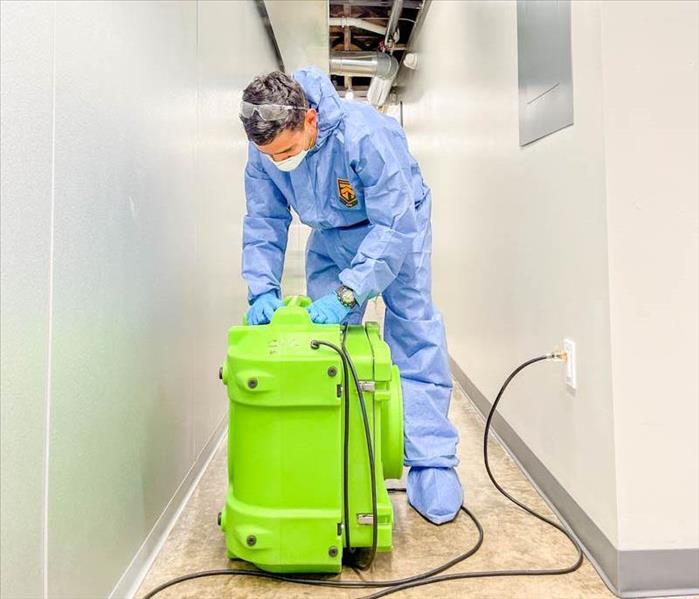 Our goal is to minimize the disruption caused by water damage and restore your property to its former glory.
Our goal is to minimize the disruption caused by water damage and restore your property to its former glory.
Water damage can be a stressful and disruptive event for homeowners and business owners alike. When facing water damage, one crucial step in the restoration process is the initial inspection. In this blog, we'll take you through what to expect during a water damage inspection, helping you gain clarity and peace of mind during a challenging time.
1. Prompt Response
When you contact SERVPRO® for a water damage inspection in Ebensburg, PA, our team understands the urgency of the situation. We strive to provide a swift response to assess the damage promptly. This quick action is essential to prevent further damage and ensure a faster recovery process.
2. Thorough Assessment
Our trained professionals will conduct a thorough assessment of the affected area. This includes identifying the source of the water intrusion, assessing the extent of damage to structures and contents, and evaluating the potential risks involved.
3. Moisture Detection
Advanced moisture detection tools will be used to identify hidden pockets of moisture that are not visible to the naked eye. Identifying and addressing these areas is crucial to prevent mold growth and further damage.
4. Damage Documentation
During the inspection, we'll document the damage extensively. This documentation includes photographs, written notes, and detailed reports. This documentation is vital for insurance claims and the restoration process.
5. Safety Assessment
Ensuring safety is a top priority. Our team will assess potential hazards, such as electrical risks or structural instability, to create a safe working environment for both our team and the property occupants.
6. Initial Drying Measures
To prevent further damage, we may implement initial drying measures during the inspection. This can include removing standing water and setting up drying equipment like dehumidifiers and air movers.
7. Restoration Plan
Based on the inspection findings, our team will develop a customized restoration plan. This plan outlines the necessary steps to restore your property to its pre-damage condition and includes estimated timelines and costs.
8. Communication and Transparency
Throughout the inspection process, we prioritize clear and transparent communication. We'll explain our findings, answer your questions, and keep you informed about the next steps in the restoration process.
Facing water damage in Ebensburg, PA, can be overwhelming, but knowing what to expect during a water damage inspection can provide clarity and help you take the first steps toward recovery. At SERVPRO® of Ebensburg, we are committed to delivering expert inspection and restoration services to the Ebensburg community. Our goal is to minimize the disruption caused by water damage and restore your property to its former glory. If you ever find yourself in need of a water damage inspection or restoration services, don't hesitate to reach out to our SERVPRO® of Ebensburg team, your trusted partner in property restoration.
Storm-Proofing your Vacation Home: Top Strategies
9/10/2023 (Permalink)
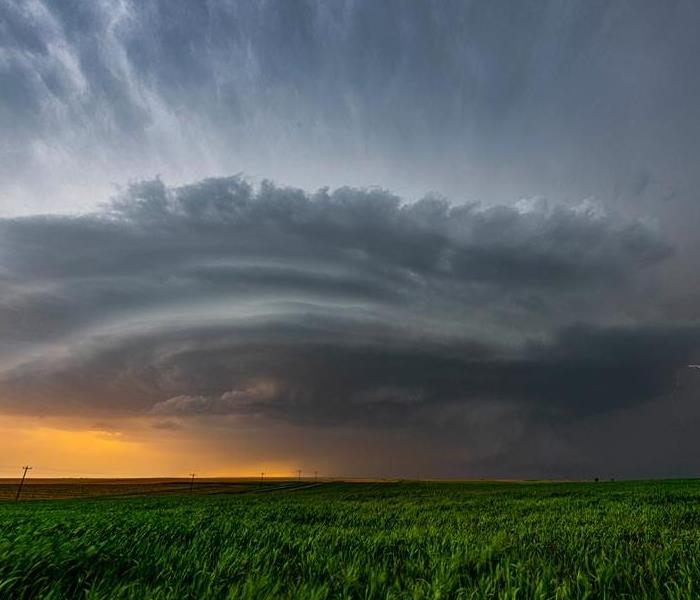 Ensure your vacation home is safe from a storm.
Ensure your vacation home is safe from a storm.
If you own a vacation home in the Northeast, you know that severe weather events are a reality that must be prepared for. From powerful coastal storms to heavy snowfall, the Northeast region experiences a wide range of weather conditions that can potentially damage your property. In this blog post, we will discuss the top strategies for storm-proofing your Northeastern vacation home, ensuring its resilience and protecting your investment.
Reinforce Doors and Windows
One of the first areas to address when storm-proofing your vacation home is the doors and windows. Strong winds can pose a significant threat to the structural integrity of your property. Install storm shutters or impact-resistant windows to protect against wind-borne debris. Reinforce entry doors with sturdy materials and install weatherstripping to keep strong winds and water out.
Before a storm hits, secure any outdoor items that could become projectiles in high winds. Patio furniture, grills, and decorative elements should be either brought indoors or securely tied down. Consider investing in heavy-duty outdoor storage containers to protect smaller items from damage. Additionally, trim trees and remove any dead branches that could potentially fall and cause damage during a storm.
Install a Backup Power Source
Power outages are common during severe weather events. Installing a backup power source, such as a generator or solar panels with battery storage, can keep essential systems running in your vacation home. This includes heating or cooling systems, essential appliances, and lighting. Ensure that your backup power source is regularly maintained and tested so that it functions when you need it most.
Proper Damage
Proper drainage is essential for preventing water damage and flooding during storms. Clear gutters and downspouts of any debris that could obstruct the flow of water. Consider installing gutter guards to prevent clogs in the first place. Check that your property's grading slopes away from the foundation to prevent water from pooling. Additionally, install a sump pump in the basement to pump out any excess water that may accumulate during heavy rainfall.
A secure and well-maintained roof is crucial in storm-proofing your vacation home. Inspect the roof regularly for loose or missing shingles and repair them promptly. Reinforce the roof structure if necessary, especially if you live in an area prone to heavy snow loads. Consider adding hurricane straps or clips to provide additional support and protection during high winds.
Create an Emergency Kit
Prepare an emergency kit that includes essential supplies, such as flashlights, batteries, a first aid kit, non-perishable food, water, and a battery-operated weather radio. Keep the kit easily accessible in case of a power outage or evacuation. Familiarize yourself with local emergency evacuation routes and make a plan in advance.
Storm-proofing your vacation home is essential for protecting your investment and ensuring the safety of your property. By reinforcing doors and windows, securing outdoor items, installing a backup power source, maintaining proper drainage, reinforcing the roof, and creating an emergency kit, you can significantly increase your vacation home's resilience to severe weather events. Prioritizing storm preparedness will give you peace of mind and help safeguard your investment for years to come.
What to Do After a Fire: Steps for Recovery and Restoration
8/15/2023 (Permalink)
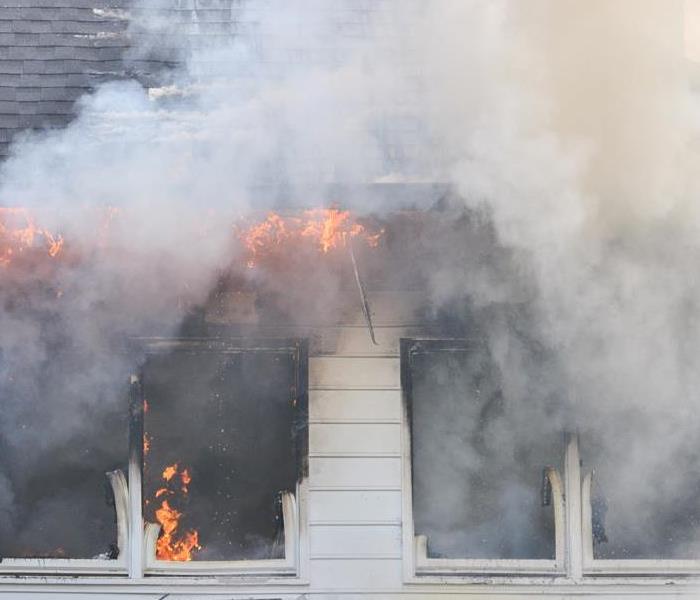 Recovering from a fire can be challenging. Call a professional for help.
Recovering from a fire can be challenging. Call a professional for help.
Experiencing a fire can be a traumatic and overwhelming event. After the flames have been extinguished, it is important to take immediate action to begin the recovery and restoration process. In this blog, we will provide you with a step-by-step guide on what to do after a fire to ensure safety, support, and a smoother path to recovery.
Ensure Safety
The first and foremost priority after a fire is to ensure the safety of yourself and your loved ones. If you have not done so already, contact emergency services to confirm that it is safe to re-enter your property. Do not enter your home or building until you have been given clearance to do so.
As soon as you are able, contact your insurance company to report the fire and begin the claims process. Provide them with all the necessary information and documentation, such as photographs, inventory lists, and any other evidence of damage. Be sure to follow their instructions and keep detailed records of all communication.
Assess the Damage
Once you have received permission to enter your property, carefully assess the damage caused by the fire. Document the extent of the damage by taking photographs or videos for insurance purposes. Make a detailed inventory of the items that have been lost or damaged.
If your home or building has suffered significant damage, it is crucial to take steps to secure the property. Arrange for temporary fencing, board up windows, and lock all doors to prevent unauthorized access. This will help protect your property and any remaining possessions.
Contact Restoration Professionals
Engage the services of professional fire damage restoration experts. They have the knowledge, expertise, and equipment to assess the damage accurately and begin the restoration process. Restoration professionals can help salvage and restore your property to its pre-fire condition and offer guidance on what can be salvaged.
Take steps to prevent further damage to your property. This may involve addressing water damage from firefighting efforts, tarping or covering areas exposed to the elements, and turning off utilities if necessary. Professional restoration specialists can guide you in mitigating additional damage.
Secure Temporary Housing
If your home or building is uninhabitable, find temporary housing for you and your family. Contact your insurance company to explore options for reimbursement of living expenses during the restoration process. Consider staying with family or friends, renting a temporary residence, or exploring local assistance programs.
Work closely with restoration professionals to salvage and clean any belongings that can be restored. They may suggest specialized cleaning techniques for clothes, furniture, and other items. Proper cleaning and restoration can help reduce the cost of replacement and ensure the safety of salvaged items.
Address Emotional and Mental Health
Experiencing a fire can be emotionally and mentally taxing. Seek support from friends, family, or professional counselors who can help you cope with the aftermath. Take care of yourself and your loved ones by practicing self-care and seeking professional help if needed.
Once the restoration process is underway, work with contractors and other professionals to rebuild and restore your property. Follow their guidance and communicate any concerns or specific requirements. Keep records of all expenses related to the rebuilding process.
Recovering from a fire can be a challenging journey, but by following these steps and seeking professional guidance, you can navigate the process more effectively. Remember to take care of yourself and lean on the support of others during this difficult time. With patience and determination, you can rebuild and restore your home or building, creating a fresh start after a fire.
Detecting Shower Leaks: Signs to Watch Out For
7/27/2023 (Permalink)
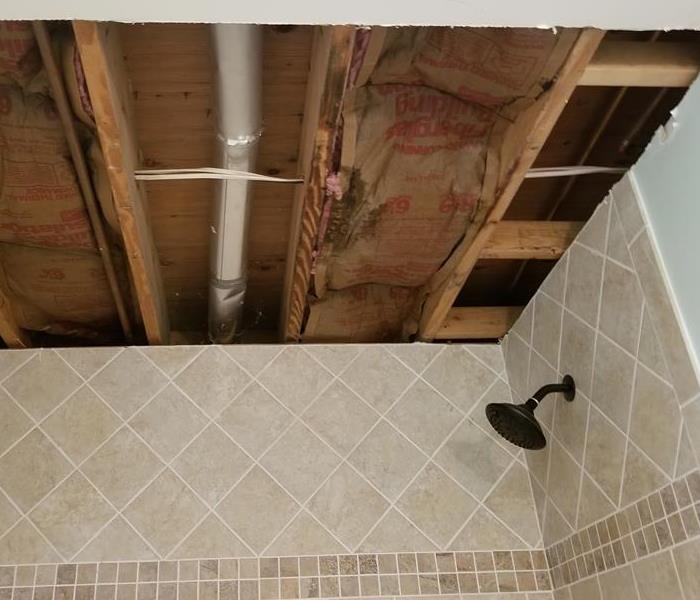 Detecting a shower leak early can help prevent water damage.
Detecting a shower leak early can help prevent water damage.
Shower leaks can be sneaky and often go unnoticed until they cause significant damage. Identifying a shower leak early is crucial to prevent water damage, mold growth, and costly repairs. In this blog post, we'll explore some telltale signs that can indicate a shower leak, helping you take prompt action and mitigate potential issues.
Visible Water Damage
Water stains or discoloration on walls, ceilings, or floors near the shower area are clear indicators of a possible leak. Look for peeling paint, bubbling wallpaper, or warped baseboards. These signs suggest that water is seeping into areas where it shouldn't be.
If you hear constant dripping or running water sounds even when the shower is turned off, it's a strong indication of a leak. Pay attention to any unusual noises coming from the shower or adjacent walls, as they could be a result of water escaping through gaps or cracks.
Mold or Mildew Growth
Excessive moisture from a shower leak can create an ideal environment for mold and mildew to thrive. Keep an eye out for black or greenish patches, musty odors, or a dank smell in the bathroom. Check corners, grout lines, and any porous surfaces for signs of mold or mildew growth.
A shower leak can cause damage to the flooring materials, especially if they are porous or not properly sealed. Look for tiles that feel soft, discolored, or loose near the shower area. Warped or buckled floorboards or laminate flooring can also indicate water damage.
Decreased Water Pressure
If you notice a sudden decrease in water pressure when using the shower, it could be due to a leak in the plumbing system. Leaks can disrupt the water flow and affect the pressure coming out of the shower head. Monitor any significant changes in water pressure and investigate the cause.
Keep an eye on your water bills. A hidden shower leak can lead to a gradual increase in water usage, resulting in higher bills without any apparent explanation. If your water consumption seems unusually high, it's worth investigating the possibility of a leak.
Cracked or Loose Grout and Caulking
Inspect the grout lines and caulking around the shower tiles. Cracked, crumbling, or missing grout can allow water to penetrate the walls or floor. Similarly, deteriorated or loose caulking around the shower fixtures or joints can contribute to water leakage.
If the shower shares a wall with an adjacent room, pay attention to any signs of wetness, discoloration, or softened drywall in that area. Moisture seeping through the wall from a shower leak can affect the integrity of the drywall and lead to further damage.
Persistent Odors
A shower leak can create a damp environment that produces unpleasant odors. If you notice persistent musty or moldy smells in the bathroom, even after thorough cleaning, it could be a sign of hidden water damage caused by a leak.
After taking a shower, observe the area around the shower stall or tub. If you notice water pooling on the floor or standing in areas where it shouldn't be, it indicates a leak. Proper drainage should prevent water from accumulating outside the designated shower area.
Detecting a shower leak early is crucial to prevent extensive water damage and costly repairs. By paying attention to the signs mentioned above, you can identify potential leaks and take prompt action. If you suspect a shower leak, it's advisable to consult a professional plumber or contractor to assess and resolve the issue. Remember, addressing a shower leak promptly not only protects your property but also ensures a healthy and functional bathroom environment.
Why a Flood Cut is Essential for Water Damage Restoration: Understanding the Benefits
6/6/2023 (Permalink)
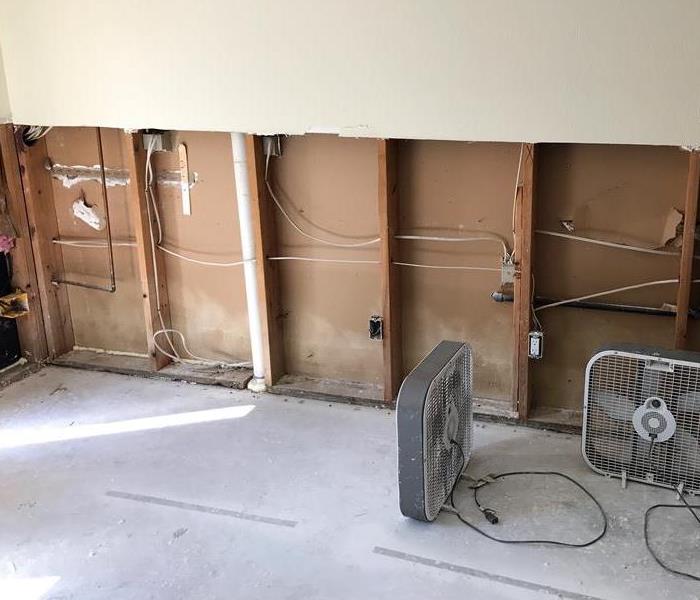 A flood cut is necessary step in the restoration process to remove water damage and prevent secondary damages.
A flood cut is necessary step in the restoration process to remove water damage and prevent secondary damages.
When a home or business experiences water damage, the cleanup and restoration process can be overwhelming. One common term you may hear during this process is a "flood cut." But what is a flood cut, and why is it necessary?
What is a Flood Cut?
A flood cut is a technique used during water damage restoration to mitigate the effects of flooding or excessive water intrusion. It involves removing a portion of drywall or other building materials above the water line to prevent further damage and facilitate drying. Typically, a flood cut is made around 12 to 24 inches above the highest water level. By removing the affected portion of the wall, professionals can access the interior space, assess the extent of the damage, and properly dry the area. This technique helps prevent the growth of mold, as it eliminates any hidden moisture that may be trapped within the wall cavity. After the flood cut is made, the damaged materials are disposed of, and the area is thoroughly dried, cleaned, and restored to its pre-damaged condition. Flood cuts are an essential part of water damage restoration, ensuring the structural integrity of the building and maintaining a healthy living environment. By removing the damaged materials, restoration professionals can properly dry and disinfect the affected area and prevent further damage.
Why is a Flood Cut Necessary?
A flood cut is necessary for several reasons:
- Preventing Mold Growth. A flood cut removes the damaged materials, preventing mold growth and reducing the risk of future water damage.
- More Effective Restoration: Removing water-damaged materials allows for more effective restoration of the affected area. Restoration professionals can properly dry and disinfect the area, ensuring that all moisture is removed and preventing further damage.
A flood cut is typically used in situations where there has been significant water damage due to flooding or excessive water intrusion. It is employed to mitigate the effects of water damage and prevent further issues such as mold growth.
A flood cut may be necessary in the following scenarios:
- Flooding: After a flood event, where a large volume of water has entered a building, a flood cut is often used to remove the affected portion of the wall and allow for proper drying and restoration.
- Burst Pipes or Plumbing Leaks: In cases where there is a significant plumbing failure, such as a burst pipe or a persistent plumbing leak, water damage can occur. A flood cut may be utilized to remove the damaged section of the wall and address the underlying issue.
- Sewage Backup: When there is a sewage backup or overflow, contaminated water can cause extensive damage to walls and pose secondary damages.
- Prolonged Water Intrusion: If water intrusion has gone unnoticed or unresolved for an extended period, leading to hidden moisture and damage within the walls, a flood cut may be necessary to expose the affected areas, assess the damage, and facilitate proper drying and restoration.
The decision to use a flood cut is typically made by water damage restoration professionals or contractors who assess the extent of the damage and the best course of action to mitigate further issues and restore the affected area.
In conclusion, a flood cut is a necessary step in the restoration process for any structure affected by water damage. It involves removing water-damaged materials to protect the health and safety of occupants, prevent mold growth, and allow for more effective restoration. If your property has experienced water damage, contact a professional restoration company to ensure that the cleanup and restoration process is done correctly and efficiently.
Taking Control: A Comprehensive Guide to DIY Mold Cleaning in Your Home
5/23/2023 (Permalink)
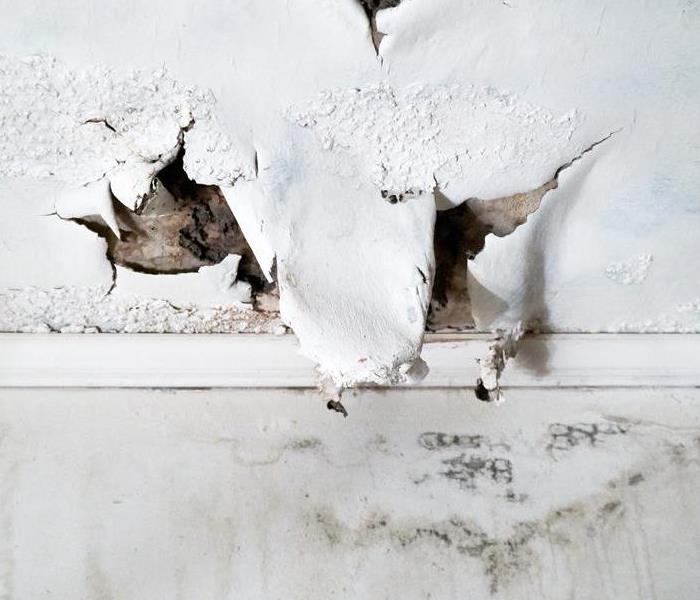 Practice regular maintenance to sure your home or business is mold free.
Practice regular maintenance to sure your home or business is mold free.
Mold is a common household problem that can pose health risks and cause damage to your property if not addressed promptly. While it's essential to hire a professional mold remediation service for extensive mold infestations, minor mold growth in small areas can often be addressed with DIY mold cleaning methods. In this blog, we will explore some tips for DIY mold cleaning to help you effectively and safely tackle mold issues in your home.
Gather the Right Tools and Protective Gear
Before starting any mold cleaning project, make sure you have the right tools and protective gear. This may include items such as a scrub brush, mold cleaner or bleach, water, gloves, goggles, a mask or respirator, and plastic sheeting or tarps to cover surfaces and contain the mold spores.
Identify the Mold Type and Affected Area
Different types of mold may require different cleaning methods. You can often visually identify mold based on its appearance, such as black, green, or fuzzy growth on surfaces. However, it's recommended to have a sample of the mold tested by a professional to determine the exact type of mold and the appropriate cleaning approach. Once you've identified the mold type and located the affected area, isolate it to prevent cross-contamination to other parts of your home.
Dry the Area and Remove Moldy Materials
Mold thrives in damp environments, so it's important to address the source of moisture before attempting to clean mold. Fix any leaks or water issues in the area and allow it to dry completely. Once dry, remove any moldy materials, such as carpets, drywall, or insulation, that cannot be effectively cleaned. Seal the moldy materials in plastic bags before disposing of them properly.
Clean the Area with Mold Cleaner or Bleach
For hard surfaces such as tile, glass, or countertops, you can use a mold cleaner or a solution of bleach and water (1 part bleach to 10 parts water) to clean the mold. Apply the cleaner or bleach solution to the affected area and use a scrub brush to thoroughly clean the moldy surfaces. Avoid mixing bleach with other cleaning chemicals as it can produce toxic fumes.
Dry and Monitor the Area
After cleaning, thoroughly dry the area to prevent mold regrowth. Use fans, dehumidifiers, or open windows to increase airflow and reduce humidity. Monitor the area regularly for any signs of mold regrowth, such as musty odors or discoloration, and take prompt action if mold reappears.
Practice Mold Prevention
To prevent mold from recurring, it's essential to address any sources of moisture, such as leaks, condensation, or high humidity, in your home. Keep your home well-ventilated, use exhaust fans in bathrooms and kitchens, and promptly clean up any spills or water damage. Regularly inspect and clean areas prone to mold growth, such as bathrooms, basements, and attics, to prevent mold from taking hold.
DIY mold cleaning can be an effective and cost-saving option for minor mold issues. However, it's important to exercise caution, wear appropriate protective gear, and follow proper cleaning methods to ensure safety and effectiveness. If you have extensive mold growth or are unsure about the type of mold you're dealing with, it's best to consult with a professional mold remediation service. Prevention is key to keeping mold at bay, so make sure to address any sources of moisture and practice regular maintenance to keep your home mold-free.
Fire and Water Damage: The Unbreakable Connection
4/9/2023 (Permalink)
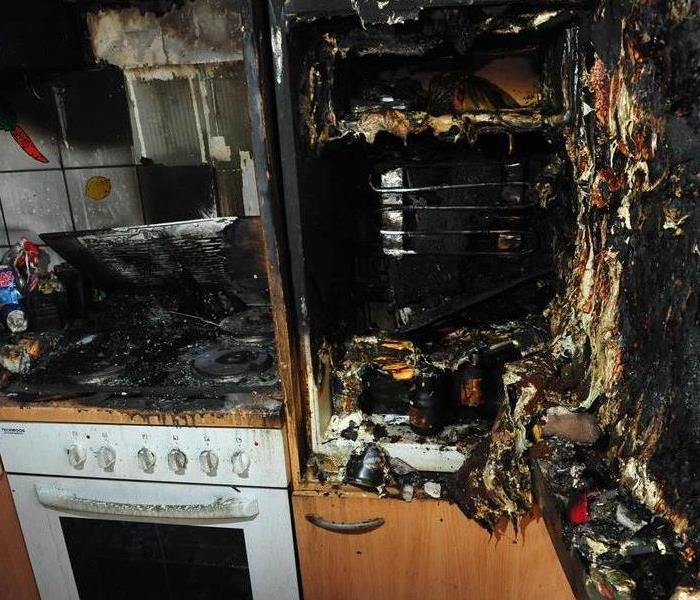 When fire damage happens in your home, give SERVPRO a call.
When fire damage happens in your home, give SERVPRO a call.
Fire and water damage are two of the most common causes of home damage. Fire damage can be caused by a fire in your home, or it can happen when you use a fire extinguisher on an electrical fire. Water damage can occur when there is flooding in your home, or if you leave something wet in one place for too long and mold develops.
The relationship between these two types of damage is obvious, if there's a fire in your house, it will likely cause some sort of water damage as well--but how exactly does this happen? And what does this mean for homeowners who want to avoid these types of problems altogether?
Effects of Fire Damage
When a fire breaks out, the damage can be extensive. The effects of smoke and soot on your property are just as damaging as the flames themselves. In fact, it's common for people to think that their home has been completely destroyed when they see smoke damage at first glance. Fire suppression systems are designed to prevent this type of damage from occurring by extinguishing fires before they get out of control and cause extensive structural damage or even loss of life.
However, even if you have an effective fire suppression system in place at your business or home, there will still be some residual effects from any fire that occurs on site and those effects can vary greatly depending on how long it took for firefighters to arrive on scene (or whether anyone was injured).
Effects of Water Damage
Water damage is a serious issue that can cause significant damage to your home. When water floods your home, it can cause mold growth and destroy property and belongings. If you have ever had to deal with this type of situation before, then you know how much work it takes to get everything back in order again.
Although flooding is one form of water damage that homeowners are most familiar with, there are other ways that water can infiltrate your home as well.
Causes of Leaks
Leaks from plumbing pipes or appliances (such as dishwashers) Roof leaks caused by storms or other weather events. Water seeping into cracks in foundations caused by settling over time
Fire and water damage go hand-in-hand. When a fire breaks out, it can cause extensive damage to your home or business. Not only will you have to replace any items that were destroyed by flames, but you may also need to repair structural damage caused by the fire itself.
The combination of these two disasters can lead to much higher repair costs than either one would have caused on its own. This is because there are certain steps that must be taken when repairing after both types of disasters.
Preventing Water Damage
Water damage is one of the most common causes of fire, and it's important to be aware of this when you're dealing with fire damage in your home.
Here are some tips for preventing water damage. Check for leaks around windows and doors, as well as any plumbing fixtures like sinks or toilets. If you find a leak, make sure it's fixed right away before it can cause more damage over time.
Use waterproofing products on walls that are prone to moisture (such as basements), especially if they're made out of wood or other flammable materials. These products will seal off cracks so that no water gets through them in the first place!
Consider installing sump pumps near your basement floor drains so that if there ever is an overflow from these drains due to flooding rains outside your home--or even just heavy rainstorms--the sump pumps will kick into action immediately and pump out all excess water before it has time get into any other parts of your house where things could catch fire easily like old furniture pieces lying around inside closets upstairs rooms upstairs bedrooms.
Causes of water in the crawl space
3/12/2023 (Permalink)
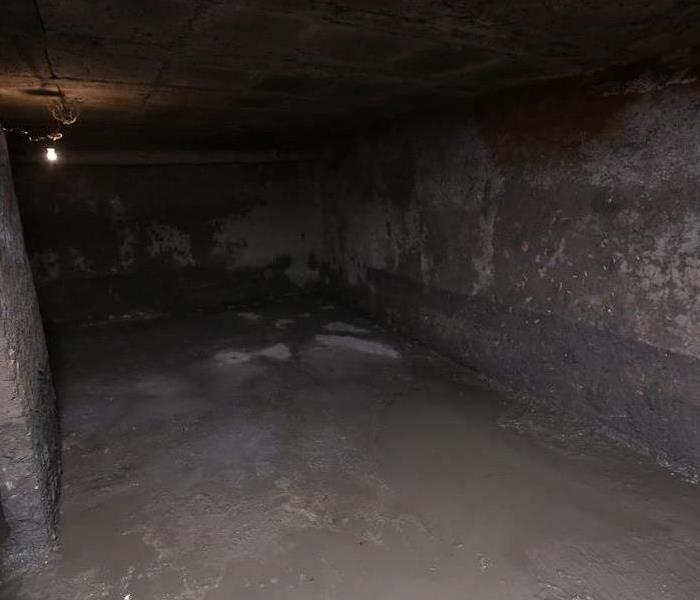 When your crawlspace suffers from a water loss, give the professionals a call today.
When your crawlspace suffers from a water loss, give the professionals a call today.
If you're having a problem with water in your crawl space, the first thing you need to do is identify the source of the moisture. The most common causes of moisture problems in a crawl space are water leaks.
Cause of Loss
Water leaks are the most common cause of crawlspace water damage. Water leaks can come from the home's foundation walls and slab, or from condensation on cold surfaces. Rising dampness due to excessive soil permeability, also know as high level of porosity in the soil. Any combination of these factors can be responsible for moisture problems in your crawlspace. It's best to have a professional do an inspection with an infrared camera so they can pinpoint where exactly there's an issue with your home's drainage system and how it was caused.
Identify the source
The first step in dealing with a moisture problem in your crawl space is identifying the source of the moisture. If you have an infrared camera, use it to locate where water is leaking into or out of your home through walls and floors. Repair or replace damaged areas as necessary, but if you can't find a specific point of entry for water leakage (or if there are too many sources), it may be worth considering crawl space encapsulation. Crawl spaces are notorious for having poor air circulation and high humidity levels, both conditions that make for ideal breeding grounds for mold spores and other harmful contaminants.
Crawl space encapsulation involves sealing up all openings between rooms within a house so that only one room has access to the outdoors, our basement. This means removing windows from basements so they don't leak into other parts of homes, installing double doors between basements/attics/roofs, sealing up cracks around pipes going into these rooms.
A high level of porosity in the soil.
A high level of porosity in the soil means that it can absorb and hold water. Soil porosity is affected by the size and shape of soil particles, as well as their distribution within the soil. The amount of organic matter present also plays a role in determining how much moisture will be held by the soil.
Excessive soil permeability is a common problem in crawl spaces because these areas tend to have large amounts of loam or clay that contain many fine pores which allow for rapid drainage through capillary action (the movement of liquid through narrow spaces).
Infrared Camera
The best way to identify and correct a moisture problem is by using an infrared camera to locate its source. Infrared cameras detect the minute changes in temperature that occur when water is present, making it possible to find hidden sources of moisture without having to dig up the entire crawlspace. This can save time and money, since you won't need to hire a contractor for large excavation jobs if there's only one area with high levels of moisture (like when there are pipes running through the floor).
If you think you may have a moisture problem in your crawlspace, it's important to get it checked out by a professional. The best way to do this is by using an infrared camera. This device can identify the source of moisture in your home, so that you can take the appropriate steps towards fixing it and preventing future issues from occurring.
Insurance and Water Damage
2/10/2023 (Permalink)
 Is your water damage covered by insurance?
Is your water damage covered by insurance?
Water damage is a common occurrence that can occur at any time. When water gets into your home or business, it can cause everything from mild cosmetic damage to expensive structural damage. Your insurance policy may cover some types of water damage, but there are many types of water-related incidents that aren't covered by standard policies. Knowing the difference between what's covered and what isn't can help you prepare for any eventuality.
What’s Covered?
If you have suffered from any type of water damage, whether it's from floods, burst pipes or frozen pipes, you may be eligible for coverage under your homeowners insurance policy. Flood waters and storm damage can affect your entire house.
Sewer backup is also a common problem coming from a clogged drain or a cracked pipe. Water can collect in your house basement without proper drainage. If sewage backs up into your home, you need to call a plumber immediately. Most homeowners and renters insurance policies cover sewer backups caused by septic system failure or backed-up municipal sewers.
Some water damage falls into an insurance "gray area."
Some water damage falls into an insurance "gray area." While your policy may cover some types of water damage after an accident, it may not cover damage caused by lack of maintenance in your home or apartment. For example, if you forget to clean out your gutters in the fall, your roof and eaves may not be able to withstand the burden of snow and ice during the winter. This could cause water damage — but it's not accidental, and so it would not be covered by your insurance policy.
That being said, don't worry too much about these kinds of things! Insurance companies have plenty of experience dealing with claims like these--you'll probably get plenty of help navigating them from them when they come up!
Having home or business serviced by professionals that are certified both in remediation (restoration industry standard) and reconstruction will help ensure complete coverage from floor to ceiling as well as outside grounds or lot.
SERVPRO in Ebensburg is locally owned and operated and IICRC certified for water damage restoration and building construction & restoration. Being certified is important because it ensures you're working with professionals who are trained in the most up-to-date methods and techniques. You can also rest assured that your property will be restored to its preloss condition, which means that if you want to sell your home or business at some point in the future, you'll have peace of mind knowing it will look just as good as it did before water damage happened. IICRC certification isn't just about making sure customers get high quality workmanship, it's also about protecting their investment by ensuring they receive full coverage under their insurance policy. As a result, when choosing a restoration company for any type of water damage clean up job - whether residential or commercial - make sure they're certified by asking them directly!
If you are looking for a water damage restoration company, SERVPRO of Ebensburg is here to help. We have been providing quality service to our community and we have the knowledge and experience needed to make sure your property is restored back to normal as quickly as possible. For more information, give us a call today!
A Serious Problem: A Leaky Roof
1/23/2023 (Permalink)
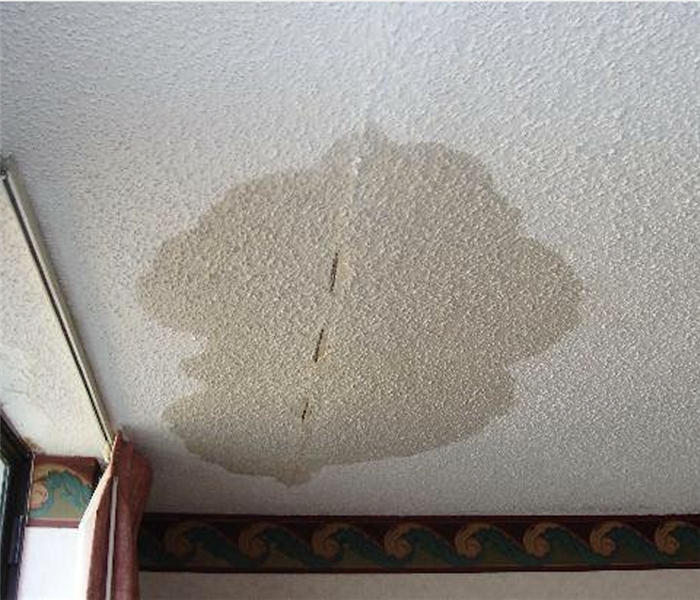 If you suspect that your roof is leaking or has developed a leak, give us a call today!
If you suspect that your roof is leaking or has developed a leak, give us a call today!
A roof leak is when water enters your home through the roof. While it may not sound serious, a roof leak can lead to mold and other potential hazards. Roof leaks are commonly caused by damaged and missing shingles, missing or worn-out flashings, and improperly flashing windows or skylights. Regardless of the reason for the roof leak, the leak can lead to mold, which can be problematic for the structure of the home.
How to Tell If Your Roof Is Leaking
To determine if your roof is leaking, here are some things to look for:
- Discoloration of the ceiling and/or walls. This can be caused by water that has run down a wall or dripped on a surface.
- Damp spots on ceilings or walls. If you are able to locate damp spots, use an absorbent cloth to dab up any remaining moisture from these areas.
- Water stains on ceilings and/or walls (indicates prolonged wetness). If you see water stains, look for additional signs of leakage such as discoloration in those areas. Water stains may also indicate mold growth behind drywall where it's difficult to access without damaging interior surfaces such as drywall and flooring.
Roof Leaks and Mold
Mold can cause structural damage to your roof. This means that mold is eating away at the wood and other material in your roof, causing it to rot. Mold can also cause a roof leak. If you find mold growing around where water collects on your roof, there's a very good chance that this is what caused the leak in the first place. Molds are also notorious for being able to eat through tar paper and shingles as well as some other types of materials used for roofs; if you see any type of discoloration or peeling on these surfaces then there's probably mold underneath those areas too!
Preventing Mold
Keep your roof clean. It's a good idea to have someone conduct an inspection of your roof every year, especially if it's made of a material that can easily become moldy (like wood). Make sure there aren't any leaks in the attic or other areas of the home. If you find one, get it fixed right away!
Clean out gutters and downspouts regularly so that water flows freely from them. This will help prevent water from pooling on the roof and leading to mold growth.
If possible, insulate your attic to keep moisture levels low inside of it. If you live in an area with high humidity during certain times of year—like summer—you may want to consider using a dehumidifier while sleeping or spending time indoors during these months as well; this will help keep air circulating freely throughout your home instead of trapping moisture inside walls where it might cause problems later down the road!
Talk to an expert about your roof's overall condition.
The best way to figure out if you have a mold problem on your roof is to have an expert inspect it. Make sure that you hire someone who can take samples of the mold and evaluate them for potential health risks. If there are any signs that the mold could be toxic, call in professionals who specialize in cleaning up contaminated buildings, like SERVPRO of Ebensburg, as soon as possible.
While leaks in your Ebensburg home can be a source of stress, it’s important to remember that you don’t have to deal with them alone. Our expert team is here to help! If you suspect that your roof is leaking or has developed a leak, give us a call today!
 Our goal is to minimize the disruption caused by water damage and restore your property to its former glory.
Our goal is to minimize the disruption caused by water damage and restore your property to its former glory.




 24/7 Emergency Service
24/7 Emergency Service








